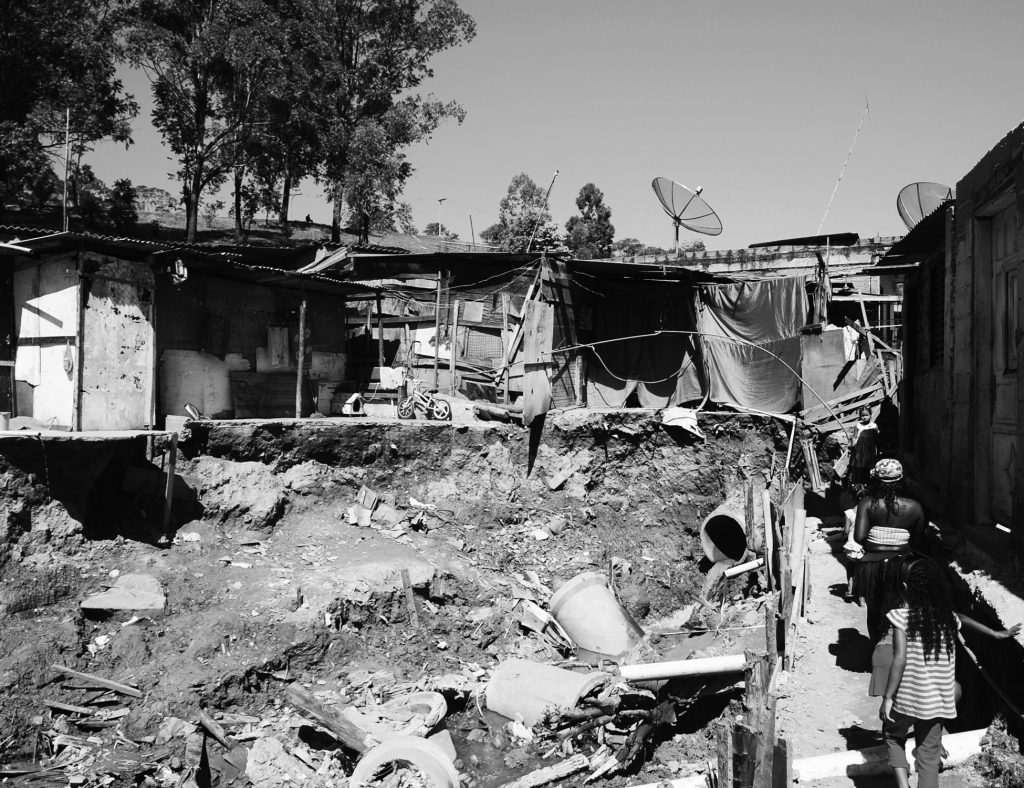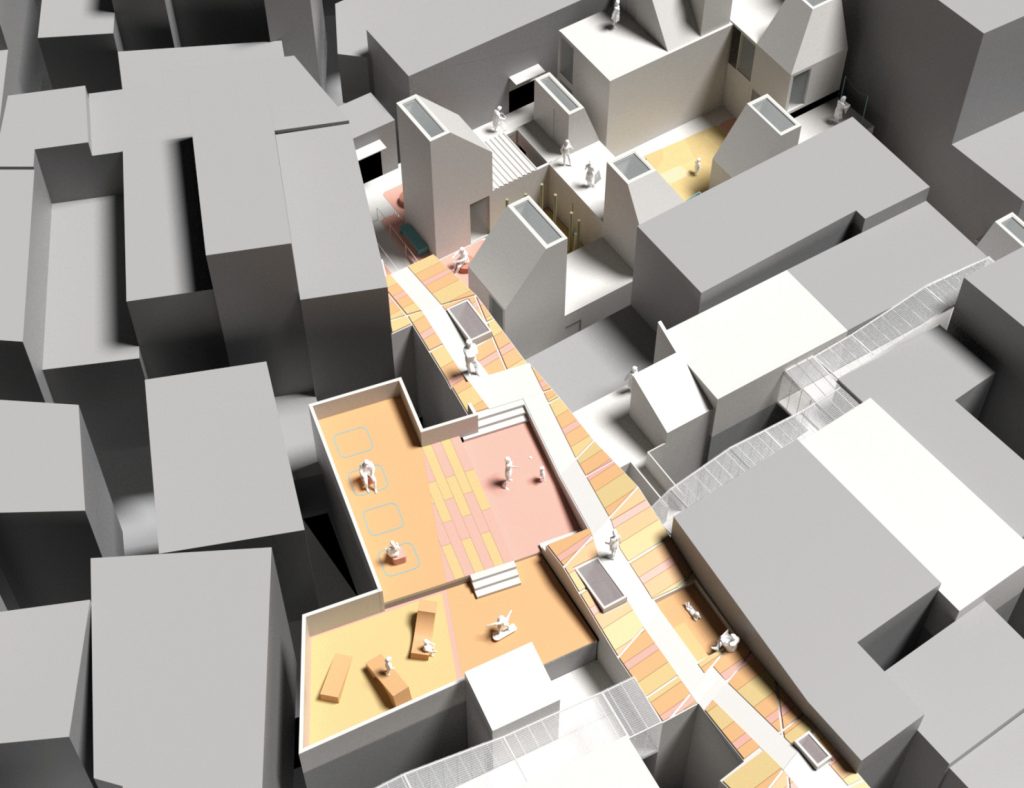
Mobilizing housing informality for urban resilience, by Kristine Stiphany
Kristine Stiphany, PhD, AIA, is Assistant Professor at the Department of Architecture at the School of Architecture and Planning, University at Buffalo. Kristine is an architect and urban planner who investigates the social, technical, and cultural dimensions that shape urban redevelopment in the Americas, with a focus on housing informality and participatory technologies in Brazil and along the U.S. – Mexico border.
Contact : stiphany@buffalo.edu
One billion people worldwide live in informal settlements, where residents frequently build their own housing and communities. They want those building efforts to make their communities intrinsically more resilient, and mitigate risk.
Climate change-related events especially have the potential to devastate community-based adaptations to housing and infrastructure, making residents vulnerable to future hazards and less likely to recover from them. This can occur through the destruction of dwellings or critical building systems such as foundations, floors, windows, and roofs, making them uninhabitable. Additionally, prolonged impacts such as drought in rural areas can compound challenges, intersecting with complex urban processes like building densification, infrastructure distribution, and migration patterns in urban communities.

Beyond basic infrastructure
But resilience is often conceptualized in limited terms, linked to the implementation of basic infrastructure in these urban areas. Most “slum upgrading” efforts to make informal settlements more resilient, for example, do not consider how interventions will physically be integrated and make proposals without the appropriate data about existing housing, even when those plans are created in collaboration with communities. Neither do they consider landscape — even though many informal settlements are settled upon sites that are vulnerable to landslides, flooding, and contamination. Or resilience is an expectation that vulnerable urban dwellers will somehow create coping mechanisms, albeit with infrastructure that they do not have.
Some scholars have considered how public space projects might provide an inroad into eventual housing improvements. Similarly, only recently have studies begun to focus on how emerging patterns of housing densification and dwelling consolidation are tied to more sustainable and green outcomes.
Learning from informal housing consolidation for climate-adaptive futures
Three insights from LAHN and other research about how the nature of housing informality in the Americas is changing, and may affect climate change adaptations in the future:
First, informal housing is consolidating more intensively than in the past, sometimes to deleterious effects, and we can only seek to ensure housing will be resilient in the future if we sustainably renovate it now. Every additional floor, room expansion retrofit and physical modification present new challenges to adequate resilience against a range of local shocks and threats.
This leads to my second point, namely that housing is consolidating differently than in the past. As a result, maladaptation can occur along the way, as an unintended consequence of consolidation, or when the adaptation of one element makes another less resilient. An example of what Vale refers to as “uneven resilience” would be where the construction of additional rental units for enhancing economic resilience destroys the infrastructures that not only protect against sanitation disasters but also provide intrinsic urban advantages and opportunities for the local population.
It is also important to acknowledge that some residents — namely tenants and low income migrants — often bear the brunt of this unevenness, and face severe limitations in their capacity to respond to either collective action to enhance resilience or threats to it.
Third is the issue of levels of resistance. Housing activists have long emphasized the urgency of addressing climate change from the context of these localized challenges and places. They have pushed for grassroots-inspired climate action for at least two decades in Latin America, and in addition to broad higher level initiatives like carbon credits, the literature suggests micro-resilience mobilization is one way to change the distribution of resilience globally.
Informal housing consolidation as a driver for resilience
There is growing acknowledgment that the production, operation, and decommissioning of built environments significantly contribute to climate change, with housing being the largest energy consumer.
Informal housing, in contrast, is often regarded as relatively low-carbon and therefore resilient. This resilience stems from its adaptive nature, as it tends to evolve rather than undergo large-scale reconstruction. Informal builders frequently utilize found materials instead of new ones, leading to more sustainable construction practices. Moreover, these processes often result in compact building designs and increased urban densities, which in turn can promote more efficient use of urban land.
Additionally, informal housing processes foster resilience by nurturing mutually-supportive relationships within social networks. This interconnectedness contributes to inclusive forms of urban transformation wherein residents play an active role in shaping and improving their urban environments. My graduate students have been exploring the concept of “sensitive densification” to analyze block-level adaptations aimed at revitalizing parts of settlements characterized by over-densification and inadequate housing conditions.

What about rental densification?
In a recent article co-authored with colleagues Peter Ward and Leticia Perez, we explore the role of rental markets in reshaping self-built environments. Our work elucidates how the densification of rental properties within existing building stocks serves as a significant form of urban upgrading.
In previous work, I show how informal housing densification is reflective of a broader infrastructural turn in urban studies. For instance, some self-builders strategically limit building heights—similar to municipal regulations—to mitigate potential building failures and enhance the livability of housing units. Adaptions promoted by self-builders in the field can create everyday changes in buildings and lessons could lead to increased resilience, an overall reduction in carbon emissions, and safer buildings.
Indeed we might learn from self-builders about how to best to recast the entire informal housing infrastructure in cities.
Toward sensitive resilience design and policy responses
Despite these informal responses, and the embrace of “self-building” in prior policy eras, it appears that policy and planning for residence of urban settlements is still falling short. Specifically, UN Habitat’s 2023 Rescuing SDG 11 for a resilient urban planet report describes a wide disconnect between the targets established in 2015 and the results today, specifically as relates to upgrading settlements and producing more housing. And while there is some scholarship to suggest innovative approaches to slum upgrading for climate change in Latin America, this does not add up to transformative change. Nor does it adequately address the localized contexts where the most significant impacts of climate change are acutely felt.
In closing I will identify two important priority considerations for more sensitive resilience planning responses. First, the need to better understand what is being upgraded, and especially the building level changes caused by rental densification. Second, the degree to which buildings are adapted differently for different climate and local threats. In both contexts it is also important to understand how each impact upon class-based inequalities related to gender, disability, ethnicity, and so on. In short, we start off a month long intensive lecture series by returning to Lawrence Vale’s question “whose resilience?” which probes how the destruction of physical and social infrastructure from climate change impacts different communities in distinct ways.

